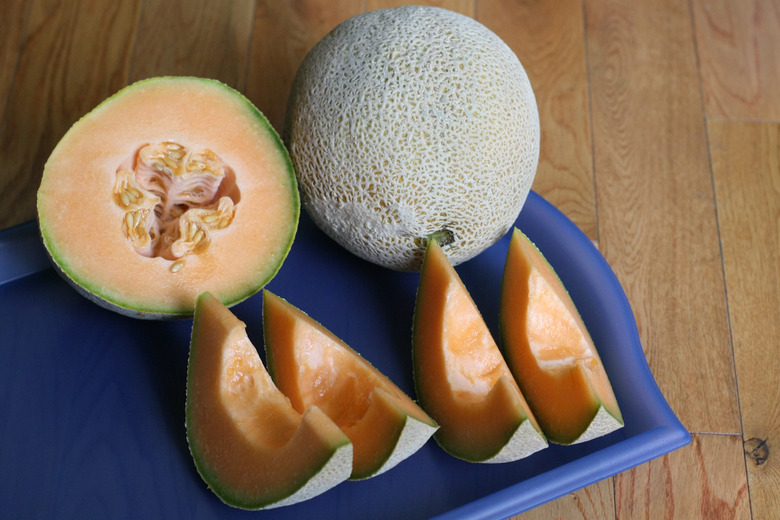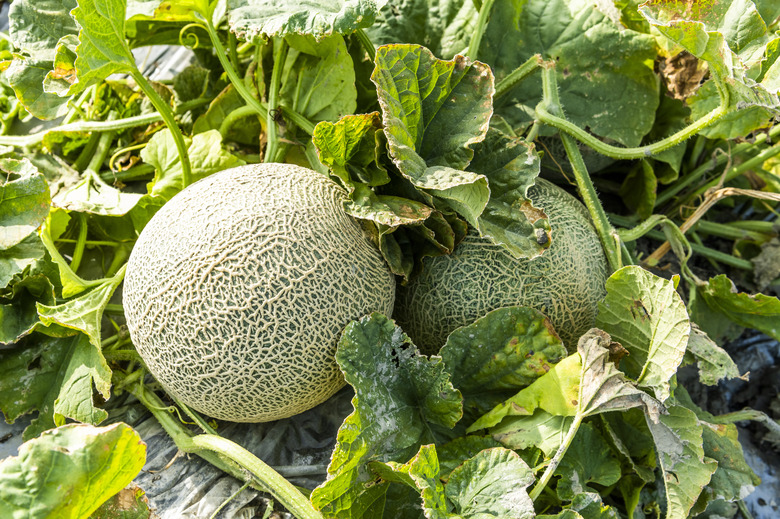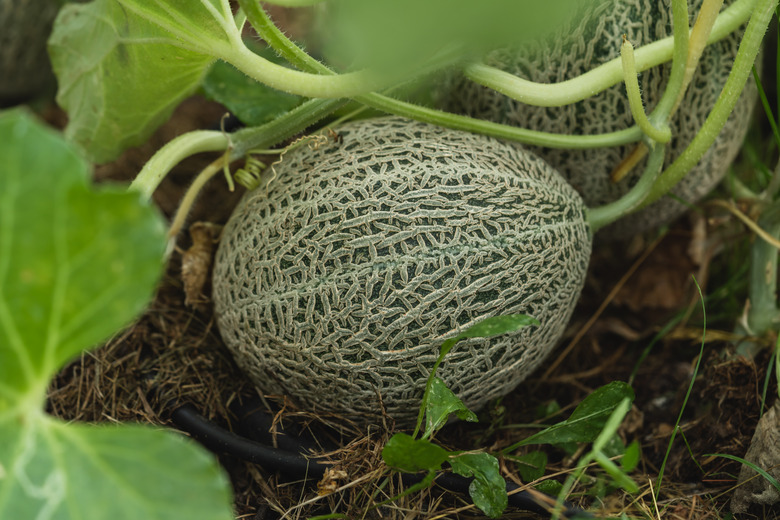How To Ripen A Cantaloupe Quickly
Learning how to ripen a cantaloupe will help you soften the flesh of an underripe melon but, unfortunately, it cannot help sweeten it. Cantaloupes (Cucumis melo var. cantalupensis), or muskmelons, grow best in hot, dry climates where they are grown for their sweet, fragrant fruit.
The melons ripen in mid-summer and become very soft and easily damaged, so some growers opt to pick them early when the flesh is still firm.
Cantaloupe melons can be ripened after picking to soften the flesh, but they will not produce more sugar—so they will lack the intense sweetness and aroma of vine-ripened melons.
Tip
Uncut cantaloupes have a shelf life of around to five to six days at room temperature but should not be left any longer than that because they could become mushy.
How to Ripen Cantaloupe Melons
Cantaloupes need time, warmth and exposure to ethylene gas to ripen off the vine. **Most unripe cantaloupes need roughly four days at room temperature to soften.** The presence of ethylene gas will enhance softening in cantaloupe melons and is integral to the process of ripening melons after picking.
- Place your under-ripe cantaloupe melon in a large paper bag. Add several ripe pieces of fresh fruit such as bananas, pears, apples or ripe avocados. Roll the bag shut and secure the top with a clip.
- Set the bag in a warm, dry place out of direct sunlight for four days. Remove the melon and eat it as soon as possible after the flesh softens.
Although it is not possible to create a perfectly ripe cantaloupe off the vine using this ripening process, you can improve the melon's texture. The flesh should have a solid light orange color with a musky, sweet smell.
When Is a Cantaloupe Ripe?
Learning how to tell if a cantaloupe is ripe on the vine will save you the hassle of having to ripen it after picking. These heat-loving summer fruits **ripen in summer roughly 70 to 90 days after planting,** but observing the fruit is the best way to tell if it is ripe.
- Cantaloupe rinds change color as the fruit ripens, turning from green to yellowish-tan. Don't choose cantaloupe melons with a greenish rind.
- The stem often develops a crack where it attaches to the base. Check the stem end of the melon often once the rind starts changing color.
- Most ripe melons develop a discoloration on the underside called a "field spot," which gives a clue about the melon's ripeness and flavor. Ripe, sugary cantaloupes have a yellowish field spot while a whiteish field spot indicates that the melon needs more time on the vine.
- **The easiest way to tell if a cantaloupe is fully ripe is to gently tug on it.** A ripe cantaloupe will detach easily from its stem while an underripe melon will need to be cut off.
Tip
Cantaloupes sometimes detach from the vine if they become rotten, so don't assume the fruit is ripe; check for soft spots, discolorations and unusual indentations in the rind.
How to Grow Sweet Cantaloupes
Cantaloupe vines don't always produce juicy fruit with a sweet aroma. They must be grown under the right conditions and, sometimes, growers have to provide a little extra attention to create the best cantaloupes possible.
Tip
Sometimes cantaloupes have a bland, insipid flavor that is due to a lack of magnesium in the soil. Mix a solution of 6 1/2 tablespoons of Epsom salts and 3 1/3 tablespoons of borax in 5 gallons of water. Apply it as a foliar spray when the cantaloupe vines start to spread out, or "run." Apply it again once the melons reach 2 inches in diameter.
- Grow cantaloupe plants in a bed that receives 6 to 8 hours of direst sunlight each day. Not only will sunlight help create the sweetest, most aromatic melons possible, it will also help keep the foliage dry and free from fungal disease.
- Choose a growing site with fertile, well-draining soil. Amend the bed with a few inches of aged manure or compost a few weeks before sowing the seeds or planting your seedlings.
- Watering impacts fruit quality in cantaloupe plants. They need roughly 2 inches of water each week during the growing season. Reduce watering slightly once the fruit starts to grow larger, which will concentrate the sugars and make a good cantaloupe.


